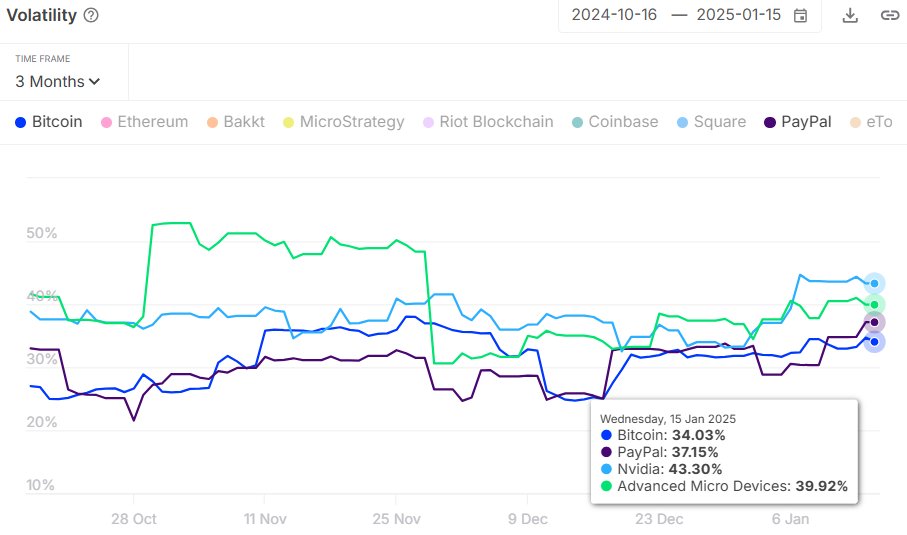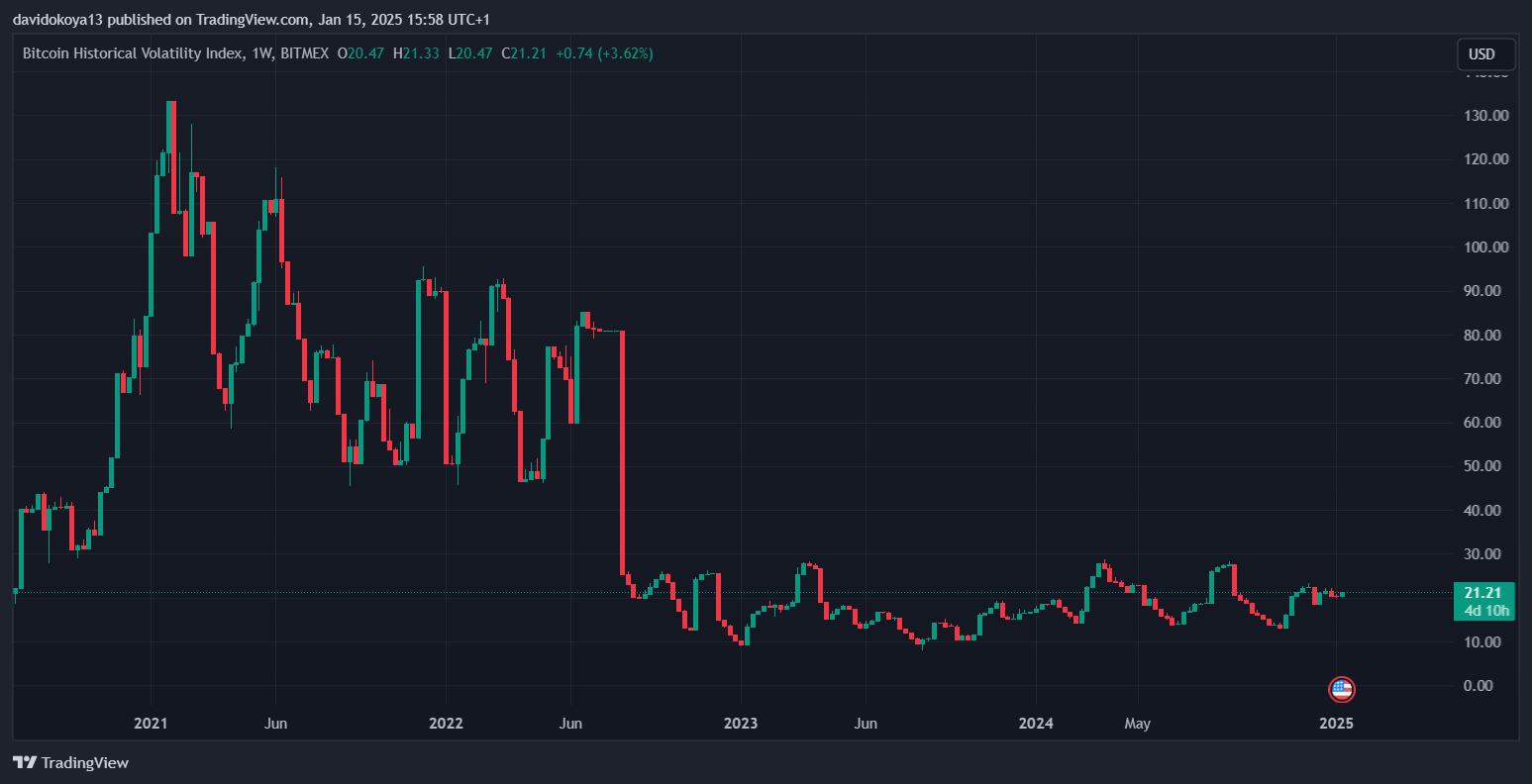
IntoTheBlock data shows that Bitcoin is now less volatile than most major technology stocks, a likely sign of improving market maturity.
When people describe Bitcoin, one concept likely to be mentioned is high volatility, especially relative to traditional financial assets. However, this narrative may soon change, at least according to recent data from crypto analytics firm IntoTheBlock.
Bitcoin Less Volatile Than Tech Stocks?
IntoTheBlock data has shown that Bitcoin is now less volatile than most major technology stocks, a likely sign of improving market maturity.
Volatility in finance describes the price fluctuations of an asset within a defined period. Assets with high volatility can see significant price changes quickly. However, analysts believe highly volatile assets are not mature, as their volatility is often a sign low volume and liquidity, allowing market participants to move the market easily.
In an X post on Wednesday, January 15, IntoTheBlock shared data showing that Bitcoin’s price has been less volatile over the past three months than the stock prices of tech giants like PayPal, Nvidia, and AMD. Specifically, Bitcoin had 34.03% volatility within the period, while PayPal, Nvidia, and AMD had a volatility of 37.15%, 43.30%, and 39.92%, respectively.

To be sure, BVOL, BitMEX’s Bitcoin Historical Volatility Index, suggests that Bitcoin volatility has jumped off a cliff since 2022, dropping from highs of about 82 to move in a tight range between 28 and 13 over the past two years.

The metric reflects Bitcoin’s growing maturity in liquidity, volume, and market capitalization. It is likely the result of increased institutional adoption through products like ETFs. At the same time, it is also likely to bolster Bitcoin demand among these institutional investors who prefer more price stability and hold for the long term.
Meanwhile, in a December 2024 report, Catherine Wood’s Ark Invest suggested that Bitcoin’s relatively low volatility pointed to the potential for further room to the upside in 2025.
